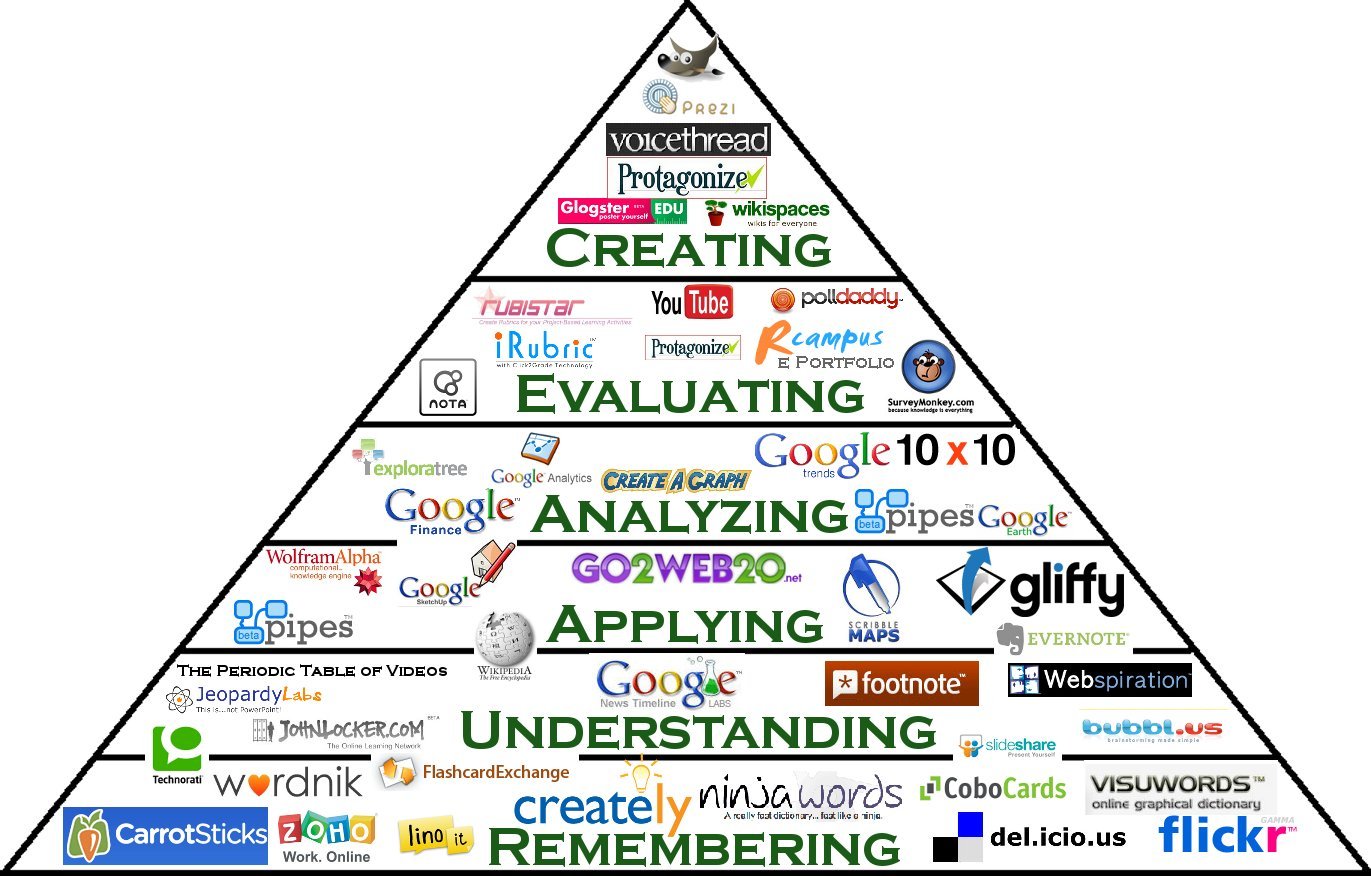Design Strategies & Pedagogies within the Classroom
For the digital natives
| Source: Google Images |
This week is all about the various methods teachers implicate into a classroom setting, such as Blooms Taxonomy and the TPACK strategy. Along with digital pedagogies and environments, the modern student and how it all affects teaching.
Blooms Taxonomy:
 |
| Source: Google Images |
By understanding the triangle to the right, looking at all the steps:
- Creating; Builds a structure or pattern from diverse element.
- Evaluating; Make judgments about the value of ideas or materials.
- Analysing; Separates material or concepts into component parts so that its organizational structure may be understood.
- Applying; Use a concept in a new situation or unprompted use of an abstraction,
- Understanding; comprehending the meaning, translation, interpolation, and interpretation of instructions and problems.
- Remembering; Recall previous learned information.
TPACK:

Pedagogical

And

Content

Knowledge
 |
| Source: TPACK. org. |
TPACK, or technological pedagogical and content knowledge is a framework that identifies the knowledge teachers need to teach effectively with technology. If you follow along with the image, you can see that TPACK looks at three forms of knowledge; Content, Pedagogy and Technology.
This method of teaching does more than just demonstrates the three knowledge bases individually, but rather, it also emphasizes new types of knowledge that lie between them, which represents more knowledge which teachers are then able to apply. some of these include:
- Pedagogical Content Knowledge
- Technological Content Knowledge
- Technological Pedagogical Knowledge
and the intersection of all three circles:
- Technological Pedagogical Content Knowledge
Digital Pedagogies:

Digital pedagogies are new ways of working and learning with ICT to facilitate quality of learning experiences for 21st century learners. If you look at the picture above, you can see that there are a plethora of ways that digital pedagogies assist in teaching students within the classroom.
They can be defined as three main principles; personalized and authentic learning, broader experiences and deeper learning and learning in the global context. these three principles cooperate together and are the core attributes which students need in a digital world.
Modern Student - digital natives & living in a digital world:
 |
| Source: Google Images |
In this day and age, everything is digital. We have interactive whiteboards in the classroom, computers with access to the internet and every student nowadays has their own cell phone. So it is important for teachers to keep up with technology and not fall behind as it could be the missing link between students understanding and grasping something.
Obviously the picture beside me is exaggerated but to some, it could be generation Z's idea of life. To this generation of digital natives, internet and the latest technology is so important to them that it falls under necessities along with money, food and water.
How it affects Teaching - How will it affect my teaching?
Knowing this, it is important for all teachers, especially for me as a future teacher, to recognize that every generation of students are different and requires different ways of teaching. In this case, the above ways of teaching are very effective and can be used in any classroom situation to help students gain wider knowledge.
Digital natives and digital immigrants:
Digital natives and digital immigrants:
Below is a YouTube clip about technology and what are digital natives and digital immigrants.
References:
Google images
| Clark, D. (1999). Bloom's Taxonomy of Learning Domains. Retrieved July 14, 2013, from http://www.nwlink.com/~donclark/hrd/bloom.html |
| Koehler, M. J. (n.d.). What is TPACK?. Retrieved July 14, 2013, from http://www.tpack.org/ |
| McNorton, D. (2010). Digital Native, Digital Immigrant. Retrieved July 14, 2013, from http://www.youtube.com/watch?v=vZfJI2_-CL0 |
Perkins, J. (2009). Digital Pedagogies are new ways of working and learning with ICT to facilitate quality learning experiences for 21st Century learners.. Retrieved July 14, 2013, from http://www.learningplace.com.au/deliver/content.asp?pid=41886 - See more at: http://reffor.us/index.php#sthash.17DYI1ry.dpuf


Wow! What can I say?
ReplyDeleteThank you Gary!
ReplyDelete